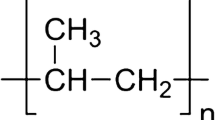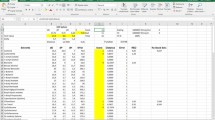Abstract
This work focuses on developing predictive quantitative structure−property relationship (QSPR) models for lower flammability limits (LFLs) of gas mixtures. Experimental LFLs of 86 blended gases were extracted from a single reference, and their mixture descriptors were calculated solely from individual molecular structure by Gaussian 09. Multiple linear regression (MLR) analysis was employed to develop the models, and three different external validation methods were carried out to check the predictive capabilities of the models. The validations have shown that these models possess great predictive power with excellent goodness of fit and internal robustness; hence, they are deemed to be qualified to predict LFLs for other blended gases with no experimental LFL data available. The applicability domains (AD) of the models were defined as well, and all the points were within the AD area. The main advantages of the established models are their simplicity and possibility of extending them for the determination of LFLs of other gas mixtures, while the LFLs of the individuals do not need to be provided.









Similar content being viewed by others
References
Pan Y, Jiang J, Wang R, Cao H, Cui Y. A novel QSPR model for prediction of lower flammability limits of organic compounds based on support vector machine. J Hazard Mater. 2009;168(2–3):962–9.
Ma T, Wang Q, Larrañaga MD. Correlations for estimating flammability limits of pure fuels and fuel-inert mixtures. Fire Saf J. 2013;56(1):9–19.
Xu W, Li J, Liu F, Jiang Y, Li Z, Li L. Study on the thermal decomposition kinetics and flammability performance of a flame-retardant leather. J Therm Anal Calorim. 2017;128(2):1107–16.
Xu Q, Jin C, Griffin GJ, Matala A, Hostikka S. A PMMA flammability analysis using the MCC. J Therm Anal Calorim. 2016;126(3):1831–40.
Unnikrishnan L, Mohanty S, Nayak SK. Evaluation of flammability and shear performance of layered-silicate-reinforced styrenic polymer. J Therm Anal Calorim. 2016;125(1):187–97.
Ma T, Wang Q, Larrañaga MD. From ignition to suppression, a thermal view of flammability limits. Fire Technol. 2014;50(3):525–43.
Gharagheizi F. A new group contribution-based model for estimation of lower flammability limit of pure compounds. J Hazard Mater. 2009;170(2–3):595–604.
Jiao L, Zhang X, Qin Y, Wang X, Li H. QSPR study on the flash point of organic binary mixtures by using electrotopological state index. Chemometr Intell Lab. 2016;156:211–6.
Wang Q, Mannan MS. Prediction of thermochemical properties for gaseous ammonia oxide. J Chem Eng Data. 2010;55(11):5128–32.
Wang Q, Rogers WJ, Mannan MS. Thermal risk assessment and ranking for reaction hazards in process safety. J Therm Anal Calorim. 2009;98:225–33.
Zhou L, Wang B, Jiang J, Pan Y, Wang Q. Quantitative structure–property relationship (QSPR) study for predicting gas-liquid critical temperatures of organic compounds. Thermochim Acta. 2017;655:112–6.
Wang B, Zhou L, Xu K, Wang Q. Fast prediction of minimum ignition energy from molecular structure using simple QSPR model. J Loss Prev Proc. 2017;50:290–4.
Gharagheizi F. Quantitative structure–property relationship for prediction of the lower flammability limit of pure compounds. Energ Fuel. 2008;22(5):3037–9.
Muratov EN, Varlamova EV, Artemenko AG, Polishchuk PG, Kuz’min VE. Existing and developing approaches for QSAR analysis of mixtures. Mol Inf. 2012;31(3–4):202–21.
Kondo S, Takizawa K, Takahashi A, Tokuhashi K, Sekiya A. A study on flammability limits of fuel mixtures. J Hazard Mater. 2008;155(3):440–8.
The PubChem Project. https://pubchem.ncbi.nlm.nih.gov/#opennewwindow.
Frisch MJ, Trucks GW, Schlegel HB, Scuseria GE, Robb MA, Cheeseman JR, Scalmani G, Barone V, Mennucci B, Petersson GA, Nakatsuji H, Caricato M, Li X, Hratchian HP, Izmaylov AF, Bloino J, Zheng G, Sonnenberg JL, Hada M, Ehara M, Toyota K, Fukuda R, Hasegawa J, Ishida M, Nakajima T, Honda Y, Kitao O, Nakai H, Vreven T, Montgomery JA Jr, Peralta JE, Ogliaro F, Bearpark M, Heyd JJ, Brothers E, Kudin KN, Staroverov VN, Keith T, Kobayashi R, Normand J, Raghavachari K, Rendell A, Burant JC, Iyengar SS, Tomasi J, Cossi M, Rega N, Millam JM, Klene M, Knox JE, Cross JB, Bakken V, Adamo C, Jaramillo J, Gomperts R, Stratmann RE, Yazyev O, Austin AJ, Cammi R, Pomelli C, Ochterski JW, Martin RL, Morokuma K, Zakrzewski VG, Voth GA, Salvador P, Dannenberg JJ, Dapprich S, Daniels AD, Farkas O, Foresman JB, Ortiz JV, Cioslowski J, Fox DJ. Gaussian, Inc., Wallingford; 2010.
Wang Q, Wang J, Larrañaga MD. Simple relationship for predicting thermal hazards of nitro compounds. J Therm Anal Calorim. 2013;111(2):1033–7.
Wang Q, Ng D, Mannan MS. Study on the reaction mechanism and kinetics of the thermal decomposition of Nitroethane. Ind Eng Chem Res. 2009;48(18):8745–51.
Lee C, Yang W, Parr RG. Development of the colle-salvetti correlation-energy formula into a functional of the electron density. Phys Rev B. 1988;37(2):785–9.
Hehre WJ, Ditchfield R, Pople JA. Self-consistent molecular orbital methods. XII. Further extensions of gaussian-type basis sets for use in molecular orbital studies of organic molecules. J Chem Phys. 1972;56:2257–61.
Krishnan R, Binkley JS, Seeger R, Pople JA. Self-consistent molecular orbital methods. XX. A basis set for correlated wave functions. J Chem Phys. 1980;72(1):650–4.
Lu Y, Ng D, Mannan MS. Prediction of the reactivity hazards for organic peroxides using the QSPR approach. Ind Eng Chem Res. 2011;50(3):1515–22.
Wang B, Yi H, Xu K, Wang Q. Prediction of the self-accelerating decomposition temperature of organic peroxides using QSPR models. J Therm Anal Calorim. 2017;128(1):399–406.
Zhou L, Wang B, Jiang J, Pan Y, Wang Q. Predicting the gas-liquid critical temperature of binary mixtures based on the quantitative structure property relationship. Chemometr Intell Lab. 2017;167:190–5.
Wang B, Zhou L, Xu K, Wang Q. Prediction of minimum ignition energy from molecular structure using quantitative structure–property relationship (QSPR) models. Ind Eng Chem Res. 2017;56(1):47–51.
Roy K, Ambure P, Aher RB. How important is to detect systematic error in predictions and understand statistical applicability domain of QSAR models? Chemometr Intell Lab. 2017;162:44–54.
Golbraikh A, Tropsha A. Beware of q2! J Mol Graph Model. 2002;20(4):269–76.
Nie NH, Hull CH, Jenkins JG, Steinbrenner K, Bent DH. SPSS: statistical package for the social sciences. 2nd ed. New York: McGraw-Hill; 1975.
Acknowledgements
This research was financially supported by China Scholarship Council (CSC). The authors would like to thank the High Performance Computing Center at Oklahoma State University for software support and computing time. The author Q. Wang also appreciates the support from the Dale F. Janes Endowed Professorship at Oklahoma State University.
Author information
Authors and Affiliations
Corresponding author
Electronic supplementary material
Below is the link to the electronic supplementary material.
Rights and permissions
About this article
Cite this article
Wang, B., Park, H., Xu, K. et al. Prediction of lower flammability limits of blended gases based on quantitative structure–property relationship. J Therm Anal Calorim 132, 1125–1130 (2018). https://doi.org/10.1007/s10973-017-6941-9
Received:
Accepted:
Published:
Issue Date:
DOI: https://doi.org/10.1007/s10973-017-6941-9




